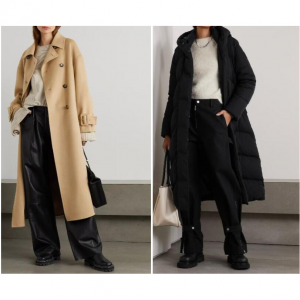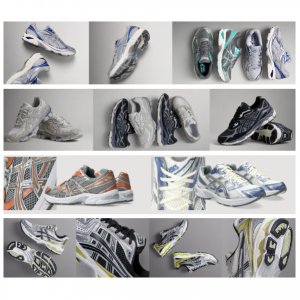
Canon M50 vs. M50 Mark II vs. M6 Mark II: Pros & Cons and Final Verdict 2025
- If you're looking for a Canon mirrorless camera that offers great image quality, is easy to use and has a decent autofocus system, the Canon EOS series is a great choice. The Canon EOS M50, M50 Mark II and M6 Mark II are three digital cameras that were officially introduced, respectively, in February 2018, October 2020 and August 2019. all the M50, M50 Mark II and M6 Mark II are mirrorless interchangeable lens cameras that are equipped with an APS-C sensor and all three cameras offer a resolution of 24 megapixels. Below is an overview of the main specs of the three cameras as a starting point for the comparison.
Canon EOS M50 Overview
Google Users Rating:4.7/5.0

The EOS M50 is a compact interchangeable lens camera for aspiring photographers looking for an easy way to boost the quality of their photos and videos. With clear, high-resolution 4K UHD 24p video, you can capture the incredible details and cinematic moments of your life at home or wherever your adventures take you. Snap vibrant, eye-catching photos with a 24.1 Megapixel (APS-C) CMOS Sensor using the built-in Electronic Viewfinder or Vari-angle Touchscreen LCD. Thanks to the fast and improved Dual Pixel CMOS Autofocus system, you can quickly lock focus on your subject to make sure you don’t miss the action.
Nevertheless, this was a big step in the right direction for Canon’s EOS M series.The EOS M50 borrows many styling cues from the older EOS M5, primarily the central positioning of the electronic viewfinder (EVF). There’s also a small built-in flash tucked away in the raised hump where the EVF sits.It's been superseded now by the EOS M50 Mark II, but the changes are small and the original EOS M50 is still a good buy if the price is right.
While the M5 was focused more towards the enthusiast photographer, with a host of body-mounted controls, both the EOS M50 and EOS M6 Mark II are a little more sparse in this respect.
Canon M50 Key Specs
Announcement Date: 2018-02-26
24MP - APS-C CMOS Sensor
ISO 100 - 25600( expands to 51200)
3.00" Fully Articulated Screen
2360k dot Electronic viewfinder
10.0fps continuous shooting
4K at 24fps , FHD at 60fps and HD at 120fps Video Recording
Built-in Wireless
390g. 116 x 88 x 59 mm
Replaced by Canon M50 II
Advantages and Disadvantages
| Pros | Cons |
|
|
Where to Buy Canon M50 Cheapest?
Walmart: from $599 (up to 4% cashback)
Amazon: $699 (no cashback)
What's in the Box?
Battery (LP-E12)
Battery charger (LC-E12)
Canon EOS M50 Mirrorless Camera
EF-M 15-45mm f/3.5-6.3 IS STM zoom lens
Owner's manual
Is Canon M50 Worth It?
The Canon M50 is definitely worth buying today.
Funnily enough, even if you’re a beginner in the photography/YouTube world, you’ll feel like a pro using it.
With its advanced features, the photos and video footage that you will be shooting will look like a masterpiece from someone who has been in the photo industry for years.
Canon EOS M50 Mark II Overview
Google Users Rating:4.6/5.0

The EOS M50 Mark II carries and builds on the strong performance of the popular EOS M50 with improvements that will be especially notable for content creators like vloggers and more. You still get the impressive image quality of the 24.1 Megapixel CMOS sensor, power of the DIGIC 8 image processor, 4K UHD 24p and HD 120p for slow motion video and more, along with some additional boosts. The autofocus locks onto the subject faster, and Eye Detection is improved so it recognizes the eyes and face further away. Eye Detection can now even be used during video with Movie Servo AF, and you can use both Eye and Face Detection during Servo AF.
What you get is added versatility and stability to keep the subject(s) in focus and as the center of attention. For content creators, you can use the EOS M50 Mark II to livestream your content with built-in Wi-Fi, and use with EOS Webcam Utility software for an easy webcam alternative. When a different angle is needed, you can shoot vertically in addition to horizontally, and the camera even offers clean HDMI output for high-resolution, high frame-rate streaming. When it comes to content, whether stills or video, the EOS M50 Mark II goes far beyond letting you just scratch the surface of your vision.
As a subtle refresh, the EOS M50 Mark II may not be the most exciting release Canon's come up with, but it also doesn't mess too much with the formula that made the original M50 so popular.
Canon M50 Mark II Key Specs
Announcement Date: 2020-10-14
24MP - APS-C CMOS Sensor
ISO 100 - 25600 ( expands to 51200)
Canon EF-M Mount
3.00" Fully Articulated Screen
2360k dot Electronic viewfinder
10.0fps continuous shooting
4K (UHD) - 3840 x 2160 video resolution
Built-in Wireless
387g. 116 x 88 x 59 mm
Replaced Canon EOS M50
Advantages and Disadvantages
| Pros | Cons |
|
|
Where to Buy Canon M50 Mark II Cheapest?
Canon: from $599 (up to 2.5% cashback)
Adorama: from $599 (up to 4% cashback)
B&H Photo Video: from $599 (up to 2% cashback)
What's in the Box?
Canon EOS M50 Mark II Mirrorless Camera Body (Black)
Camera Cover (R-F-4)
Strap (EM-200DB)
Battery Charger (LC-E12)
Battery Pack (LP-E12)
Terminal Cover
Canon 1 Year Limited Warranty
Is Canon M50 Mark II Worth It?
Yes! While there may not be enough updates to entice some M50 shooters to upgrade, the Mark II is definitively the better camera. It has improved autofocus capabilities, plus new features like the vertical video shooting, wireless live streaming, and the record button on the LCD screen should appeal to vloggers and content creators.
Canon EOS M6 Mark II Overview
Google Users Rating:4.8/5.0

The Canon EOS M6 Mark II camera blends high-quality optics into a compact, mirrorless camera that’s perfect for your everyday photography adventures. Boasting an enhanced 32.5 Megapixel CMOS (APS-C) sensor with the DIGIC 8 Image Processor and ISO range of 100-25600 (expandable to 51200), the EOS M6 Mark II makes it easy to capture sharp, inspiring images and videos – including beautifully rendered, uncropped 4K 30p videos – wherever or whenever the moment strikes.
The Canon EOS M6 II is an enthusiast-targeted 32.5MP APS-C mirrorless camera built around the company's EF-M mount. In many respects it's a more compact mirrorless variant of the EOS 90D DSLR that was announced simultaneously.
Physically, it closely resembles the original M6 but brings a host of speed and feature upgrades. These include a higher resolution sensor, the ability to capture 4K video and a mode that shoots bursts of Raw files at up to 30 fps. The result is a capable and pleasantly engaging enthusiast camera.
Canon M6 Mark II Key Specs
Announcement Date: 2019-08-28
33MP - APS-C CMOS Sensor
ISO 100 - 25600 ( expands to 51200)
Canon EF-M Mount
3.00" Tilting Screen
14.0fps continuous shooting
4K (UHD) - 3840 x 2160 video resolution
Built-in Wireless
408g. 120 x 70 x 49 mm
Replaced Canon EOS M6
Advantages and Disadvantages
| Pros | Cons |
|
|
Where to Buy Canon M6 Mark II Cheapest?
Canon: from $849.99 (up to 2.5% cashback)
Adorama: from $849 (up to 4% cashback)
B&H Photo Video: from $849 (up to 2% cashback)
What's in the Box?
Canon EOS M6 Mark II Mirrorless Digital Camera (Body Only)
LP-E17 Lithium-Ion Battery Pack
LC-E17 Charger
R-F-4 Camera Cover (Body Cap)
Strap
Terminal Cover
Canon 1 Year Limited Warranty
Is Canon M6 Mark II Worth It?
If you don't want an EVF and can live with framing via LCD, the M6 Mark II is probably the best camera you can find for that. It's got a bright screen sitting on a small body, but packs one heck of a lot of image quality inside.
Canon M50 vs. M50 Mark II vs. M6 Mark II Comparison Side by Side
1.Key Features
Canon M50
Unlike Canon's mirrorless EOS R series, which have full-frame sensors, the EOS M50 has a smaller APS-C sensor. This isn't a bad thing – it's the same size as the ones you'll find in many of its DSLRs like the Canon EOS Rebel SL3 / EOS 250D and allows the camera to be small while retaining good image quality.
Was the first Canon camera to get the DIGIC 8 processor
4K video capture, albeit with a 1.6x crop
Dual Pixel CMOS AF system
Canon M50 Mark II
The EOS M50 Mark II is a compact and easy to use mirrorless camera with a 24MP APS-C sensor. It features only modest upgrades compared to its predecessor, but it comes in at an attractive price point with pleasing ergonomics and solid image quality.
24.1MP APS-C CMOS sensor
Cropped 4K/25p video
Updated autofocus
Canon M6 Mark II
The sensor in the EOS M6 Mark II gets a dramatic boost in resolution over the one in the M6, packing more pixels than ever before on a Canon APS-C sensor.
New 32.5MP CMOS sensor
14fps shooting
Uncropped 4K video recording
2.Build and Handling
Canon M50
In terms of design, the M50 is a cross between the M100 and the M5: there's only one control dial, like the M100, but the camera offers an EVF, hotshoe and mode dial, like higher-end M-series cameras. Overall, it fits into Canon's mirrorless line nicely as a slightly beefier entry-level alternative to the M100.
Limited body-mounted controls
Excellent touchscreen
Refined user interface
Canon M50 Mark II
The EOS M50 Mark II is styled like a mini-DSLR and although it’s small, the grip is substantial and comfortable. The camera’s controls are almost identical to its predecessor. The control dial, shutter button, record button and M-Fn can all be found on the top right hand side of the camera’s body.
Identical to EOS M50
Compact and lightweight
2.36-million dot EVF
Canon M6 Mark II
The M6 II gains some direct controls over its predecessor and features the latest iteration of the Canon menu system. There's also a good degree of customization available.
Compact design with new sturdy grip
No viewfinder included – optional one available
Tilting touch-sensitive screen
3.Autofocus
Canon M50
Canon has enhanced the Dual Pixel AF system on the M50 in several ways:
More AF points and larger coverage area with select lenses
Improved subject tracking compared to other M-series models
7.4 fps bursts with continuous AF
Eye AF in single AF mode
Canon M50 Mark II
Although the Canon M50 Mark II has the same basic AF system as the previous model, the Mark II features face and eye tracking when shooting both stills and video.
Contrast Detection: 143
Phase Detection: 99
-2 to +18 EV Autofocus Sensitivity
Canon M6 Mark II
The EOS M6 II has a reliable Dual Pixel autofocus system with eye detect. It's not quite the best in the business, but it's not at all bad, either.
Up to 5,481 AF points
143 automatic AF areas
Up to 88 x 100% coverage depending on lens
4.Image Quality
Canon M50
The EOS M50's 24MP sensor is found in virtually every modern APS-C Canon camera, DSLR or otherwise. However, the M50 is the first to use the Digic 8 processor, which may impact JPEG image quality.
Images display very good detail
Noise nicely controlled
Good dynamic range enables recovery of detail
Canon M50 Mark II
There was absolutely nothing wrong with the 24MP sensor in the older M50 and using it again in the Mark II was a good call. It produces some really clean and crisp images that we saw with the M50, with excellent color rendition and lots of details.
Sharp images
Good dynamic range
Noise is well controlled
Canon M6 Mark II
The 32.5MP sensor in the M6 II (shared with the EOS 90D) is the first new sensor design from Canon we've seen in a while - check out how it performs.
Highest-resolution Canon APS-C sensor
Up to 25,600 native ISO
Great 'Fine Detail' Picture Style
5.Video Quality
Canon M50
The EOS M50 is Canon's first consumer-level camera to support 4K (UHD) video capture. It does so at 24p/25p with a maximum bitrate of 120Mbps using the H.264 codec with IBP compression.
Canon M50 Mark II
The EOS M50 Mark II is capable of 4K capture, but we find it's really best if you are planning to stick to 1080p. The 4K/24p video is heavily cropped and you can't use the camera's dual-pixel autofocus (it's contrast-detection only).
Canon M6 Mark II
With full-width 4K recording and a microphone input, the M6 II looks like a capable little video camera. Find out how it compares with its peers.
6.Performance
Canon M50
Thanks to its DIGIC 8 image processor, the EOS M50 can shoot at up to 10fps in Single AF mode, and should you want to track your subject using Continuous AF this drops to a still very strong 7.4fps.
Decent burst shooting speeds
Large and bright EVF
Battery life could be better
Canon M50 Mark II
Canon M50 Mark II can shoot at up 10fps bursts in Single AF mode, while tracking slows that down a bit to a still strong 7.4fps when in Continuous AF mode.
Snappy autofocus
Bright, sharp EVF
Inherits Digic 8 image processor
Canon M6 Mark II
Going on appearances, the Canon EOS M6 Mark II may not immediately strike you as being suited to action, sports and wildlife photography, but for a camera so diminutive it's actually packing some impressive specs that will appeal to photographers working in those genres.
14fps or 30fps RAW burst mode
305-shot battery life
7.Battery
Canon M50
The battery life of the EOS M50 is a little disappointing. It's just 235 shots, so you're probably going to want to get a second battery if you're planning on shooting for extended periods.
Battery: Built-in
Battery description:LP-E12 lithium-ion battery & charger
Battery Life (CIPA):235
Canon M50 Mark II
While the battery is rated for 305 shots (strangely more than the 235-shot rating for the M50 despite the same battery), you can squeeze more out of it.
Battery: Battery Pack
Battery description:LP-E12 lithium-ion battery & charger
Battery Life (CIPA):305
Canon M6 Mark II
The EOS M6 II uses the same LP-E17 battery as its predecessor and some of Canon's smaller DSLRs, from which it manages to squeeze a rating of 305 shots per charge.
Battery: Battery Pack
Battery description:LP-E17 lithium-ion battery & charger
Battery Life (CIPA):305
8.Price
Canon M50
Canon EOS M50 is still available now, The lowest price is $579 body only (black), and it is also available in a kit with 15-45mm lens (black) from $649, a kit with 15-45mm lens (white) from $649, a kit with with 15-45mm and 55-200mm lenses (black) from $879 and a video creator kit (black) from $699.
Canon M50 Mark II
Canon EOS M50 Mark II is available now, and carries a suggested retail price of $599 body-only, $699 with a 15-45mm F3.5-6.3 kit lens, or $929 with the 15-45mm and 55-200mm F4.5-6.3 lenses.
Canon M6 Mark II
Canon EOS M6 Mark II is available in a series of kits. The official body-only price is $849. Adding the retracting 15-45mm IS STM lens and EVF (pictured) boosts the price to $1099, while an 18-150mm IS STM and EVF kit will set you back $1349.
Canon M50 vs. M50 Mark II vs. M6 Mark II Full Comparison Chart
| General | Canon EOS M50 | Canon EOS M50 Mark II | Canon EOS M6 Mark II |
| Announced | 2018-02-26 | 2020-10-14 | 2019-08-28 |
| Body Type | SLR-style mirrorless | SLR-style mirrorless | Rangefinder-style mirrorless |
| Sensor | |||
|---|---|---|---|
| Type | CMOS | CMOS | CMOS |
| Size | APS-C | APS-C | APS-C |
| Dimensions | 22.3 x 14.9 mm | 22.3 x 14.9 mm | 22.3 x 14.9 mm |
| Area | 332.27mm2 | 332.27mm2 | 332.27mm2 |
| Megapixels | 24 megapixels | 24 megapixels | 33 megapixels |
| Max Resolution | 6000 x 4000 | 6000 x 4000 | 6960 x 4640 |
| Max Native Light sensitivity | 25,600 ISO | 25,600 ISO | 25,600 ISO |
| Max Boosted Light Sensitivity | 51200 ISO | 51200 ISO | 51200 ISO |
| Min Native Light sensitivity | 100 ISO | 100 ISO | 100 ISO |
| RAW Support | √ | √ | √ |
| Autofocus | |||
| AF Touch | √ | √ | √ |
| AF Continuous | √ | √ | √ |
| AF Single | √ | √ | √ |
| AF Tracking | √ | √ | √ |
| AF Selective | √ | √ | √ |
| AF Center | √ | √ | √ |
| AF Multi Area | √ | √ | √ |
| AF Live View | √ | √ | √ |
| AF Face Detection | √ | √ | √ |
| AF Contrast Detection | √ | √ | × |
| AF Phase Detection | √ | √ | √ |
| Number of Focus Points | 143 | 143 | 143 |
| Lens | |||
| Manual Focus | |||
| Lens Mount | Canon EF-M | Canon EF-M | Canon EF-M |
| Number of Available Lenses | 29 | 29 | 29 |
| Screen | |||
| Type | Fully Articulated | Fully Articulated | Tilting |
| Size | 3.00" | 3.00" | 3.00" |
| Resolution | 1,040k dots | 1,040k dots | 1,040k dots |
| Touch Screen | √ | √ | √ |
| Viewfinder | |||
| Viewfinder | Electronic | Electronic | Electronic (optional) |
| Viewfinder Resolution | 2,360k dots | 2,360k dots | 2,360k dots |
| Viewfinder Coverage | 100% | 100% | 100% |
| Photography Features | |||
| Max Mechanical Shutter | 1/4000s | 1/4000s | 1/4000s |
| Max Electronic Shutter | n/a | n/a | 1/16000s |
| Shutter Priority | √ | √ | √ |
| Aperture Priority | √ | √ | √ |
| Manual Exposure Mode | √ | √ | √ |
| Custom White Balance | √ | √ | √ |
| Built-in Image Stabilization | Digital only | Digital only | No |
| Built-in Flash | √ | √ | |
| Flash Range | 5.00 m (at ISO 100) | 5.00 m (at ISO 100) | 4.60 m (at ISO 100) |
| Max Flash Sync | n/a | n/a | 1/200s |
| External Flash | √ | √ | √ |
| Continuous Shooting | 10.0 fps | 10.0 fps | 14.0 fps |
| Multi-Segment Metering | √ | √ | √ |
| Average Metering | √ | √ | √ |
| Spot Metering | √ | √ | √ |
| Partial Metering | × | × | √ |
| AF-Area Metering | × | × | × |
| Center Weighted Metering | √ | √ | √ |
| AE Bracketing | √ | √ | √ |
| WB Bracketing | × | × | × |
| Video Features | |||
| Max Video Resolution | 3840 x 2160 | 3840 x 2160 | 3840 x 2160 |
| Video Formats | MPEG-4, H.264 | MPEG-4, H.264 | MPEG-4, H.264 |
| Microphone Port | √ | √ | √ |
| Headphone Port | × | × | × |
| Connectivity | |||
| Wireless Connectivity | Built-In | Built-In | Built-In |
| HDMI | √ | √ | √ |
| Physical | |||
| Environmental Sealing | × | × | × |
| Weight | 390g | 387g | 408g |
| Dimensions | 116 x 88 x 59mm | 116 x 88 x 59mm | 120 x 70 x 49mm |
| Battery Life | 235 shots | 305 shots | 305 shots |
| Other Features | |||
| Timelapse Recording | √ | √ | √ |
| GPS | None | None | None |
Final Verdict
So what conclusions can be drawn? Is Canon M6 Mark II better than Canon M50? Is the Canon M50 Mark II better than the Canon M6 Mark II? Or is it worth upgrading from Canon M50 to M50 Mark II? The listing below highlights the relative strengths of the three models.
The Canon EOS M50 is the company's first affordable camera with 4K, but there are better mirrorless options out there for video.
The Canon EOS M50 Mark II offers some minor updates from original. It's still a very good digital camera for photographers, but one to skip if 4K video is a priority.
The EOS M6 Mark II marks a big step forward for Canon's APS-C mirrorless system, but the available lenses aren't as appealing as those offered by Fujifilm and Sony.
Conclusion: Which is Better?
Below is a summary of the relative strengths of each of the 3 contestants.
Reasons to prefer the Canon EOS M50:
Easier framing: Has an electronic viewfinder for image composition and settings control.
More flexible LCD: Has a swivel screen for odd-angle shots in portrait or landscape orientation.
More heavily discounted: Has been on the market for longer (launched in February 2018).
Arguments in favor of the Canon EOS M50 Mark II:
Easier framing: Has an electronic viewfinder for image composition and settings control.
More flexible LCD: Has a swivel screen for odd-angle shots in portrait or landscape orientation.
More affordable: Was introduced into a lower priced category (29 percent cheaper at launch).
More modern: Is somewhat more recent (announced 1 year and 1 month after the M6 Mark II).
Advantages of the Canon EOS M6 Mark II:
More detail: Has more megapixels (32.3 vs 24MP), which boosts linear resolution by 16%.
Better video: Provides higher movie framerates (4K/30p versus 4K/24p).
Faster burst: Shoots at higher frequency (14 vs 10 flaps/sec) to capture the decisive moment.
More compact: Is smaller (120x70mm vs 116x88mm) and will fit more readily into a bag.
Easier travel charging: Can be conveniently charged via its USB port.
Faster buffer clearing: Supports a more advanced SD data transfer standard (UHS-II vs UHS-I).
Most modern: Was introduced somewhat more recently.
Related Read:
Canon vs. Nikon vs. Sony vs. Fujifilm: Which Brand Wins the Camera Showdown?
Canon G7X Mark II vs. Sony ZV-1 vs. Nikon Z30: Pros & Cons and Final Verdict
Sony A7 III vs. Sony A7R III vs. Sony A7S III: Differences and Reivews 2025
Sony A7C vs. A7 III vs. A7 IV: Ultimate Comparison & Verdict 2025
Sony A7 IV vs. Canon EOS R6 vs. Nikon Z6 II: Pros & Cons and Final Verdict
Sony A6000 vs. Canon M50 vs. Nikon D3500: Which Option is the Best?
Sony A6000 vs. A6100 vs. A6400 vs. A6600: Ultimate Comparison & Verdict

Extrabux is an international cashback shopping site, offering up to 30% cashback from 10,000+ Stores!
Microsoft, Dell, HP, Lenovo, Alienware, Acer, Asus, Samsung, BestBuy, Walmart, Staples, Overstock, QVC, New Egg, Office Depot, eBay, etc.
Join to get $20 welcome bonus now! (How does Welcome Bonus work?)
Recommendation
-

Is Turkish Airlines Good for International Flights?
-

10 Best & Stylish Winter Coats for Women on NET-A-PORTER in 2025
-

Top & Best 12 Sneaker Apps/Websites for Raffles, Releases & Restocks in 2025
-

7 Best Gift Card Exchange Sites - Buy, Sell and Trade Discount Gift Card Safely and Instanly!
-

Top 9 Professional Skincare Brands for Licensed Estheticians 2025










